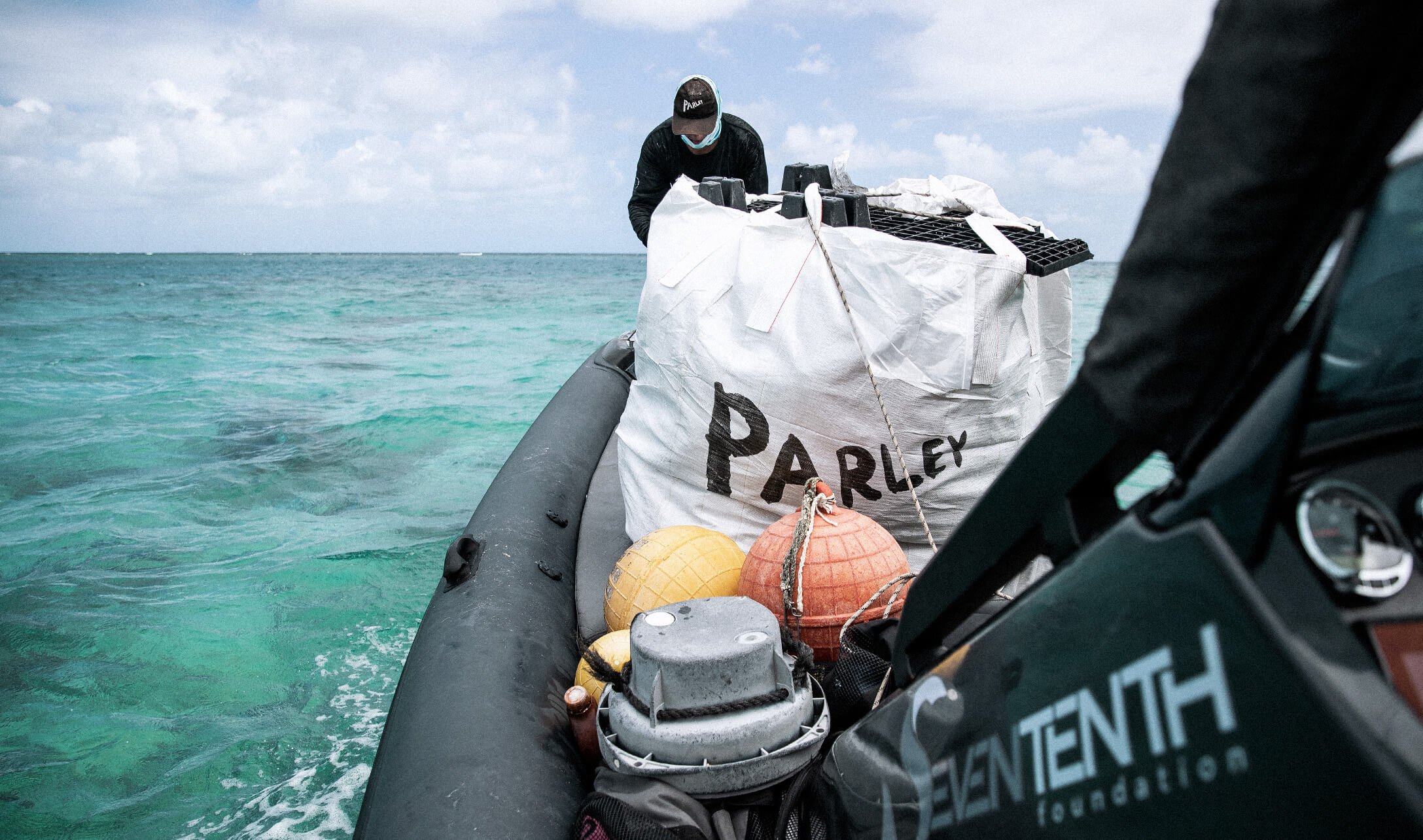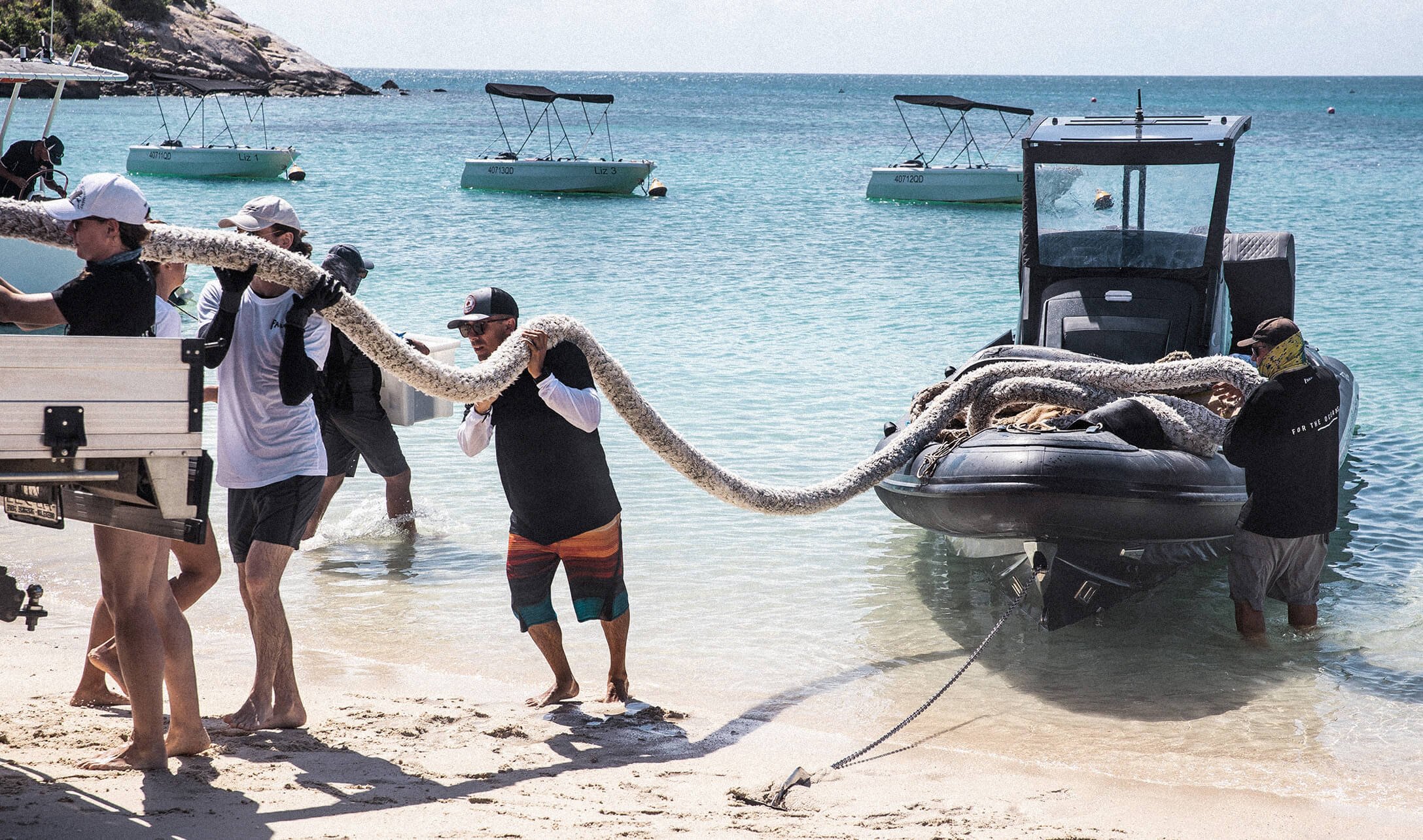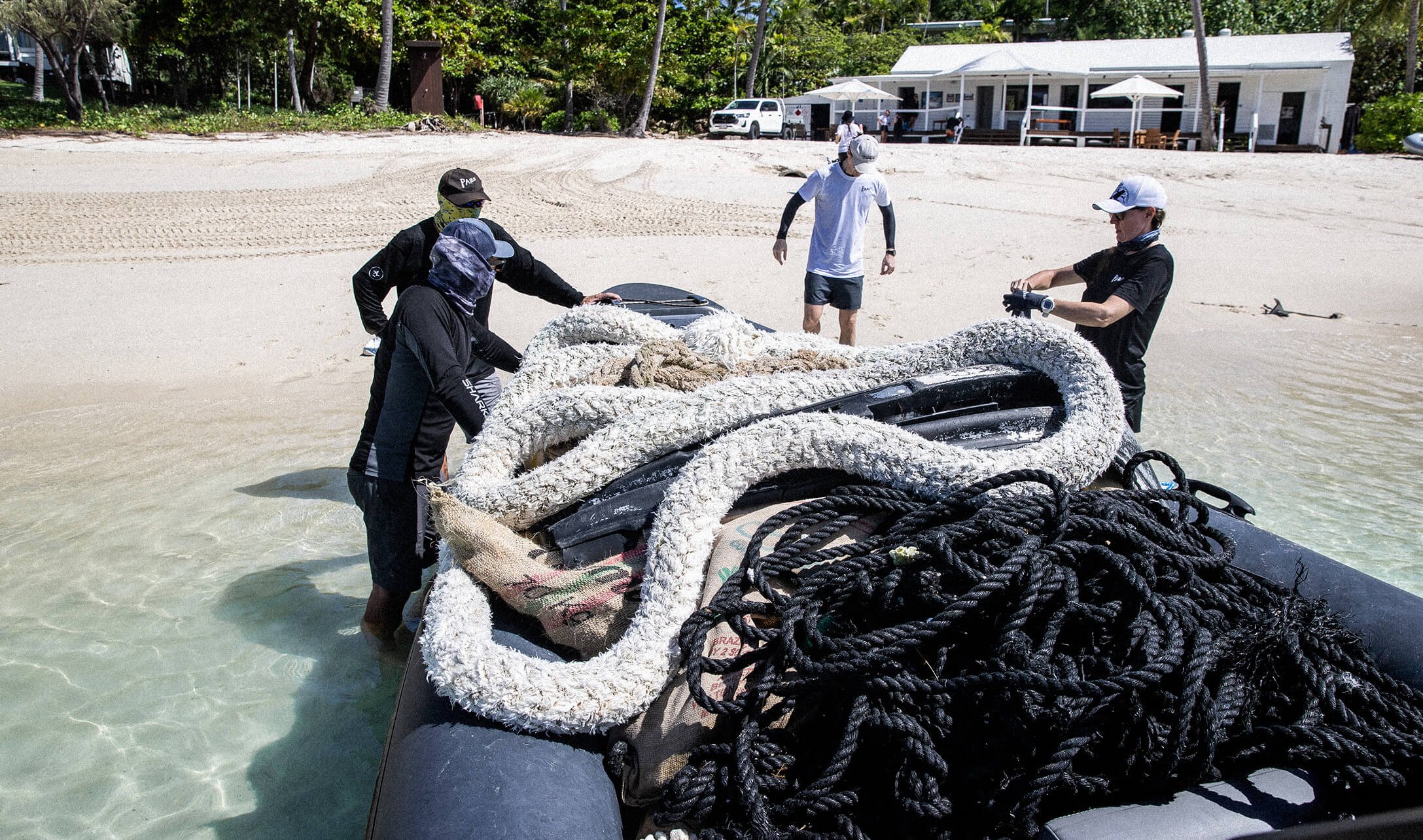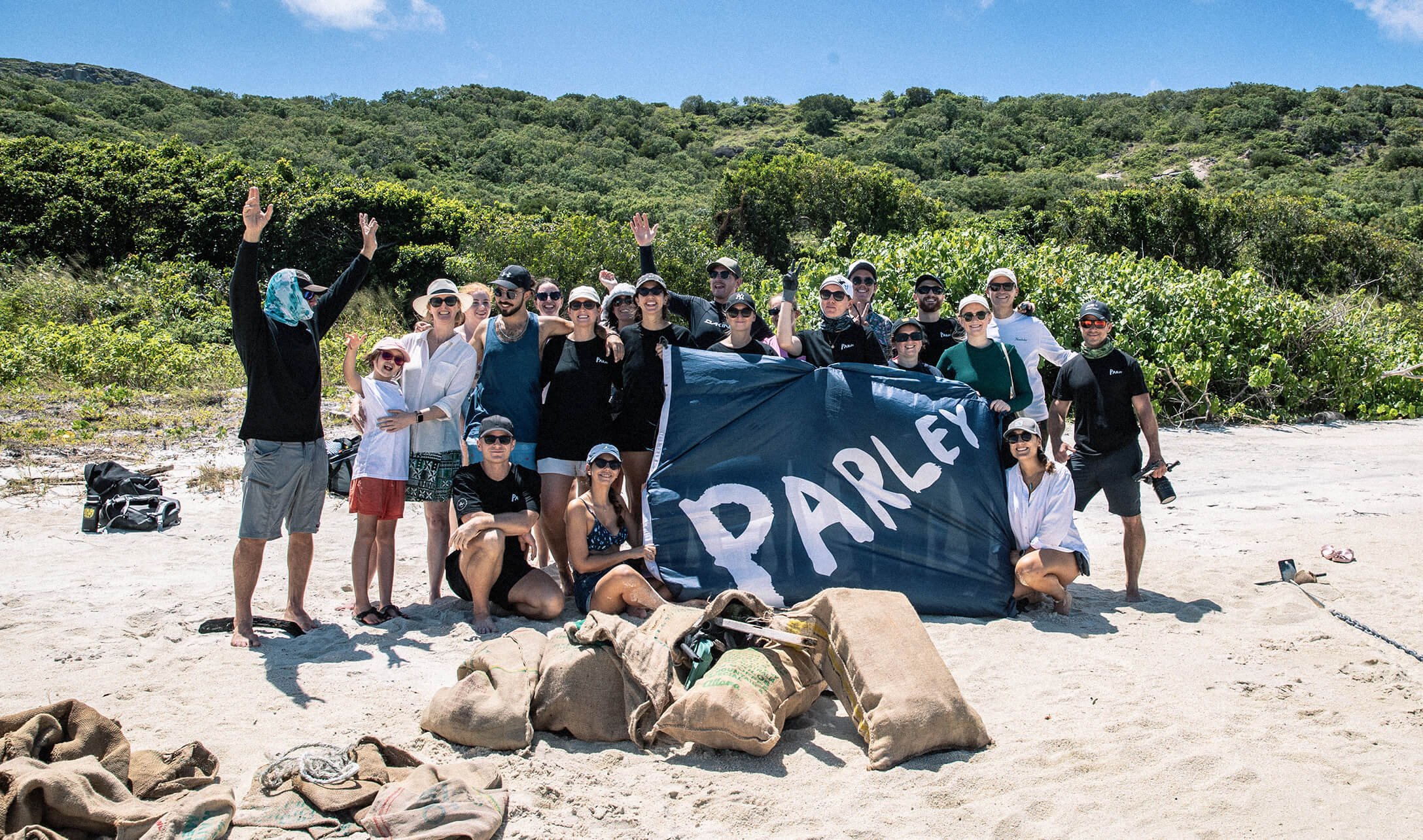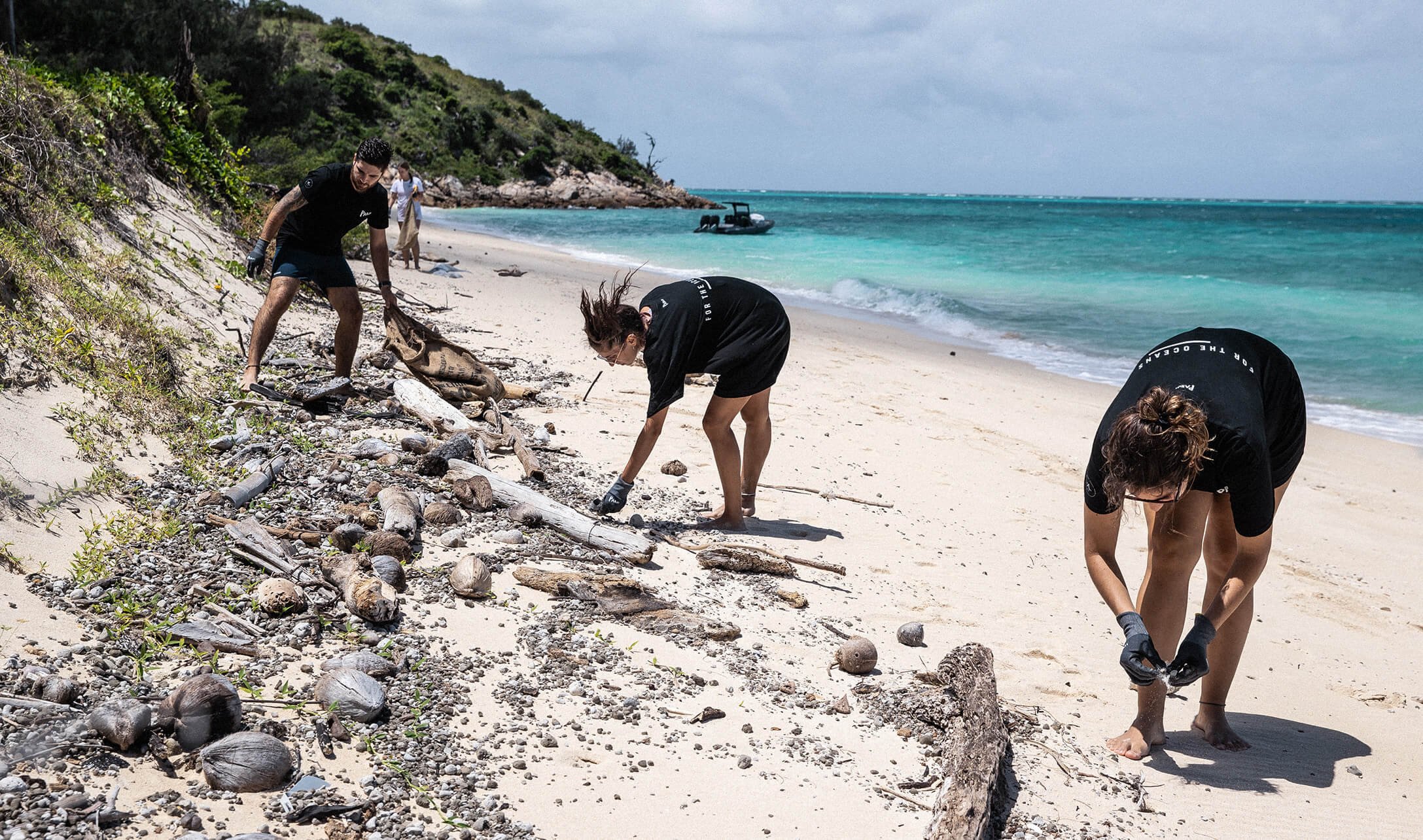CLEAN-UP REPORT: LIZARD ISLAND
HOW WE COLLECTED 750 KILOGRAMS OF DEBRIS FROM 24 BEACHES ON FOUR ISLANDS OVER FIVE DAYS
The Parley Australia team recently packed their reef-friendly sunblock and Clean Waves sunglasses and headed out on a five-day expedition to Lizard Island, at the northern tip of the Great Barrier Reef. Consisting of Lizard, and three smaller, adjoining islands – Palfrey, South and Bird – the Lizard Group is incredibly remote, 20 miles into the Pacific off the coast of Australia. To get there, the team split in two, with half sailing so as scope out islands and beaches along the way, and the other half taking the short prop-plane flight from Cairns.
Other than the handful of scientists from the Lizard Island Research Station, and the staff of the 40-suite Lizard Island Resort, the islands remain uninhabited – by humans at least. Underwater is a different story, and the team can report sightings of eagle rays, a big shovelnose ray, sea turtles, sharks, a pod of dolphins and an endangered Australian dugong.
As is the case when working to protect the nature of remote island paradises such as Lizard, collaboration is crucial. So, Parley has struck up a partnership with the Lizard Island Resort, one of Australia’s most exclusive, to facilitate the collection and removal of plastic from the islands’ 24 beaches. The team also hold workshops with the resort staff and their guests, guiding them on best practices for beach clean-ups, as well as the particular threats various forms of marine debris present.
These workshops took place on the beach and the reef, and in the evenings as lectures at the resort. Over the course of the expedition, the Parley team engaged 48 of the 100 staff members of the resort’s staff in three clean ups, on Trawler, Mangrove and One Tree Coconut beaches, as well as the beaches of Eagle, Palfrey and South Island.
In doing so, we collected 750 kilograms of debris, including ships’ ropes, nets, and a lot of PET, which we shipped over to the mainland by barge and onto Containers for Change. A circular economy deposit scheme for recycling, Containers for Change is a government-backed initiative and a perfect partner for Clean Waves: their recycling stations create jobs in Indigenous communities across Queensland, with the proceeds going towards funding social initiatives – and more beach clean ups.
We snorkeled at Mermaid Reef off Lizard Island and Cod Hole on the outer reef, where we had multiple sightings of the chunky Potato Cod, but none of mermaids. We can report that coral cover on reefs have recovered after they were smashed in a cyclone 2014, the double bleaching events caused by record breaking water temperatures over 2016-17, and earlier outbreaks of Crown of Thorns starfish – we also interviewed Dr Anne Hoggett of the world-leading Lizard Island Research Station to learn more about the resilience of coral reefs.
While it’s one of the most beautiful islands in Australia, Lizard Island is also a hotspot for plastic pollution, and it’s all due to its location. Its position in the northern stretches of the Great Barrier Reef see it sit directly in the path of Southern Equatorial Current, which delivers plastic to the reefs and mangroves of the island from across the entire Pacific Ocean, even from as far away as South America.
Much of the debris comes from the fishing and shipping industries. There are reports of ghost nets in the area, and we recently removed a net stuck in a particularly tricky spot following a tip-off from Dr Hoggett, and the help of our partners at Citizens of the Great Barrier Reef and the Australian Marine Conservation Society. At the time of the Parley expedition, the wind was blowing over 20 knots so we couldn't land the boat on the east-facing Coconut Beach, a magnet for marine debris carried along the current. This is often the case when working with nature instead of against it. We'll be back there in calmer weather.
Photography by Christian Miller


